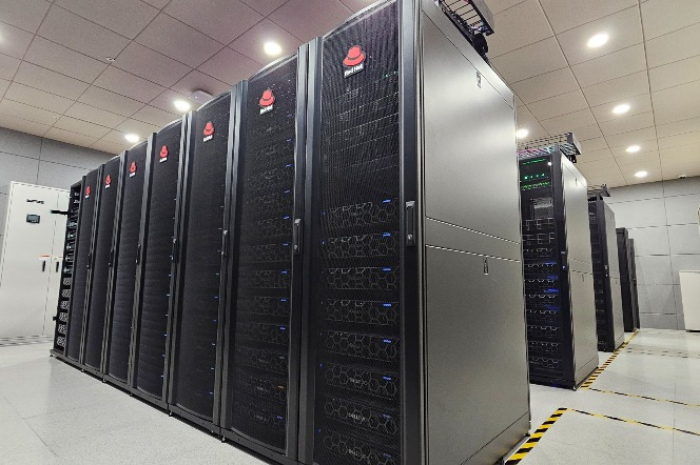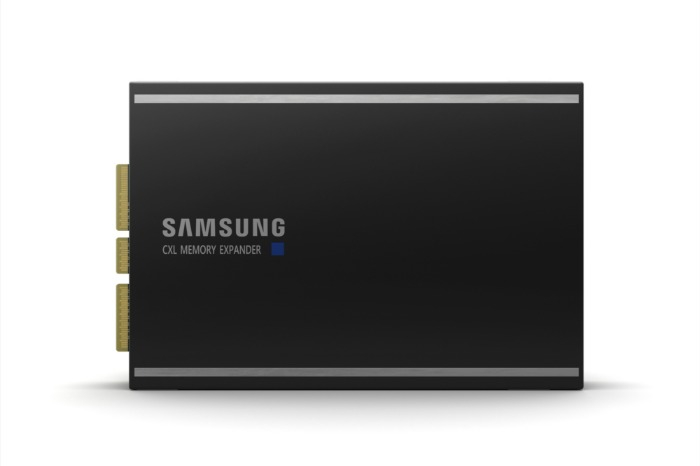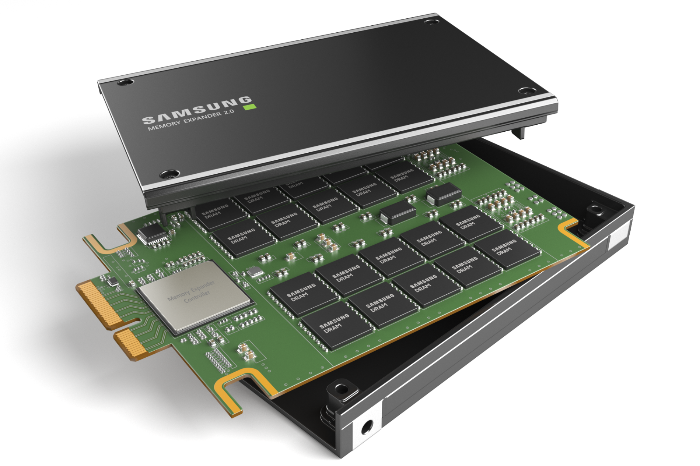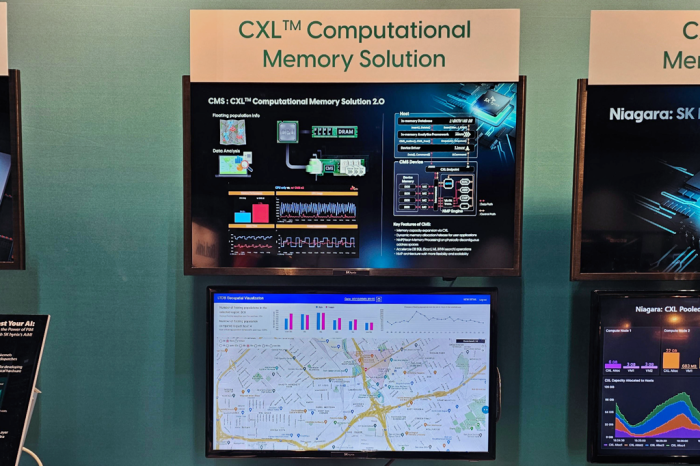Korean chipmakers
Samsung Elec moves a step closer to CXL commercialization
The S.Korean memory giant succeeded in verifying CXL memory interoperability in a user environment with Red Hat’s latest OS
By Dec 27, 2023 (Gmt+09:00)
3
Min read
Most Read
LG Chem to sell water filter business to Glenwood PE for $692 million


KT&G eyes overseas M&A after rejecting activist fund's offer


Kyobo Life poised to buy Japan’s SBI Group-owned savings bank


StockX in merger talks with Naver’s online reseller Kream


Meritz backs half of ex-manager’s $210 mn hedge fund



Samsung Electronics Co. seeking to lead the next-generation memory market has moved a step closer to commercializing computer express link (CXL)-based memory products after successfully verifying its operations in a real user interface with US software company Red Hat Inc.
South Korea’s No. 1 memory chip producer, also the global leader, announced on Wednesday that it has validated its CXL memory recognition, read and write operations in Red Hat Enterprise Linux (RHEL) 9.3, an enterprise Linux operating system (OS) developed by Red Hat.
It is the industry’s first to verify the interoperability of CXL memory in a real OS, it added.
CXL is a unified interface standard that connects various processors, such as central processing units (CPUs), graphics processing units (GPUs) and memory devices.
It can expand memory capacity and bandwidth well beyond what is possible today and is considered one of next-generation memory solutions because it enables high-speed, low-latency communication between the host processor and devices, according to Samsung Electronics.

CXL memory allows multiple servers to share it, and the latest test result means that data centers can use Samsung’s CXL memory for high-performance computing without major adjustments to their existing hardware, the company explained.
CXL DEMAND IS SET TO GROW IN THE AI ERA
CXL demand is expected to increase rapidly as the demand for systems with greater memory bandwidth and capacity is also growing to deal with massive data processing required in emerging fields such as generative artificial intelligence, autonomous driving and in-memory databases (IMDBs), the company said.
The latest development is a significant milestone because it can help expand the CXL ecosystem, still in its infancy.
“The successful verification of Samsung’s CXL Memory Expander interoperability with Red Hat Enterprise Linux is significant because it opens up the applicability of the CXL Memory Expander to IaaS1 and PaaS2-based software provided by Red Hat,” said Marjet Andriesse, senior vice president and head of Red Hat Asia Pacific.
Bae Yong-cheol, executive vice president of Memory Product Planning at Samsung Electronics, also said, “Our CXL partnership with Red Hat is an exemplary case of collaboration between advanced software and hardware, which will enrich and accelerate the CXL ecosystem as a whole.”

Samsung Electronics and Red Hat have been working together to develop CXL open-source and reference models since they signed a memorandum of understanding in May 2022 to collaborate on next-generation memory.
Samsung Electronics pins high hopes on CXL memory in the AI era.
Samsung Electronics formed the CXL consortium in 2019 with global tech giants such as Google, AMD, arm, Intel and IBM as the consortium’s board of directors including itself.
It has also forged partnerships with data centers, server and chipset manufacturers to develop next-generation interface technology since then.
It is deemed to trail behind its crosstown rival SK Hynix Inc. in another AI memory technology, high bandwidth memory (HBM). But its CXL memory capability is considered superior to its competitors.
HBM is about seven times more expensive than ordinary dynamic random-access memory (DRAM) chips but CXL enables memory expansion with cheaper double data rate 5 DRAMs (DDR5).

Samsung Electronics developed the industry’s first CXL-based DRAM in May 2021 and filed for four CXL trademarks earlier this month, readying to commercialize CXL memory.
As CXL demand is expected to grow, Samsung Electronics’ rivals are also accelerating their efforts to catch up.
SK Hynix in October showcased a CXL-based computational memory solution (CMS), which uses near-memory processing (NMP) architecture to address CPU memory bottlenecks and improve processing performance, for the first time in the industry.
Micron Technology Inc. also unveiled its CXL 2.0 memory module in August.
The global CXL market is forecast to grow to $15 billion in 2028, according to market intelligence company Yole Intelligence.
Write to Ye-Rin Choi at rambutan@hankyung.com
Sookyung Seo edited this article.
More to Read
-
 Korean chipmakersSamsung, SK pin hopes on HBM sales with Nvidia's new AI chip
Korean chipmakersSamsung, SK pin hopes on HBM sales with Nvidia's new AI chipNov 14, 2023 (Gmt+09:00)
2 Min read -
 Korean chipmakersSK Hynix showcases cutting-edge CXL, AiM memory at OCP Summit
Korean chipmakersSK Hynix showcases cutting-edge CXL, AiM memory at OCP SummitOct 20, 2023 (Gmt+09:00)
2 Min read -
 Korean chipmakersHBM chips key theme for Samsung Nov investors forum
Korean chipmakersHBM chips key theme for Samsung Nov investors forumSep 15, 2023 (Gmt+09:00)
2 Min read -
 Korean chipmakersSK Hynix, Samsung's fight for HBM lead set to escalate on AI boom
Korean chipmakersSK Hynix, Samsung's fight for HBM lead set to escalate on AI boomSep 03, 2023 (Gmt+09:00)
4 Min read -
 Korean chipmakersAdvanced memory is strategic asset for Korea’s chip supremacy: Hwang
Korean chipmakersAdvanced memory is strategic asset for Korea’s chip supremacy: HwangAug 03, 2023 (Gmt+09:00)
3 Min read
Comment 0
LOG IN


